Esp32 Set Time Without Ntp
The ESP32 is a powerful microcontroller that offers a wide range of features and capabilities. One of its notable features is the built-in Real-Time Clock (RTC), which allows for accurate timekeeping even without relying on the Network Time Protocol (NTP). In this article, we will explore different methods to set the time on the ESP32 without using NTP and discuss the considerations for maintaining accurate time in various scenarios. So, let’s dive in!
Overview of NTP and its limitations
NTP, or Network Time Protocol, is a protocol used to synchronize the time on computer networks. It allows devices to obtain highly accurate time information from NTP servers, which are connected to atomic clocks and other highly precise time sources. NTP is widely used in various applications, including networked devices, servers, and even smart home automation systems.
However, relying solely on NTP for time synchronization has its limitations. Firstly, it requires an active internet connection to communicate with NTP servers, which may not always be available or reliable. In scenarios where the ESP32 is deployed in remote areas or in situations where internet access is limited, relying on NTP becomes impractical.
Moreover, NTP may introduce some latency due to network delays, resulting in a small but noticeable time drift. Additionally, the accuracy of NTP is dependent on the quality and reliability of the NTP server being used.
Utilizing the internal RTC (Real-Time Clock) of the ESP32
The ESP32 is equipped with an internal RTC module, which provides accurate timekeeping capabilities. The RTC is often powered by a separate battery, allowing it to keep track of time even when the power to the ESP32 is disconnected. To set the time using the ESP32’s RTC, follow these steps:
1. Include the necessary libraries: To utilize the internal RTC, include the “RTC.h” library in your ESP32 project.
2. Initialize the RTC module: In your code, initialize the RTC module using the “RTC.begin()” function. This prepares the RTC for time synchronization.
3. Set the time: To set the time manually, use the “RTC.set()” function and provide the desired time as input. This function accepts parameters such as year, month, day, hour, minute, and second.
4. Retrieve the time: To fetch the time from the RTC, use the “RTC.get()” function. This function returns the current time stored in the RTC module.
Retrieving time from an external source and manually setting it
If relying on the internal RTC is not sufficient or accurate enough, there are alternative methods to obtain accurate time without using NTP. One method involves obtaining time from an internet-based API. There are several APIs available, such as the WorldTimeAPI or TimeAPI, which provide accurate time information over HTTP requests. By retrieving the time from these APIs, you can manually set the time on the ESP32 using the RTC module.
Another option is to use GPS modules or devices that provide highly accurate time information. GPS receivers can accurately determine the current time by accessing signals from satellites. By connecting a GPS module to the ESP32, you can retrieve the time data and use it to set the RTC.
Time synchronization using a local time server or network device
In certain scenarios, it may be beneficial to have a local time server or time source within a network for time synchronization. A local time server can be a computer or a dedicated network device that is connected to an accurate time source, such as an atomic clock or a GPS receiver. The ESP32 can then be configured to synchronize with this local time server.
To set up a local time server, follow these steps:
1. Set up the time server: Connect an accurate time source, such as an atomic clock or GPS receiver, to a computer or network device. Install and configure time server software, such as NTPd or Chrony, on the computer or network device.
2. Configure the ESP32: In the ESP32 code, specify the IP address or hostname of the local time server using the “setTimeServer()” function. This function directs the ESP32 to synchronize its time with the local time server.
Implementing timekeeping algorithms or protocols for precision time management
For applications that require precise time management, there are various timekeeping algorithms and protocols available. These algorithms or protocols aim to provide accurate timekeeping by compensating for any time drift or inconsistencies.
One notable timekeeping algorithm is the Network Time Protocol (NTP). Although we are discussing setting time without NTP in this article, NTP can still be used to achieve precise time management when an internet connection is available.
Another popular algorithm is the Precision Time Protocol (PTP). PTP is an IEEE standard used for synchronizing the clocks of devices within a network. It offers high accuracy and is commonly used in industrial control systems and telecommunications applications.
Considerations for maintaining accurate time on ESP32 without NTP
When setting up time management on the ESP32 without NTP, it is crucial to consider the following points to ensure accurate timekeeping:
1. Continuous time monitoring: Periodically check the time stored in the ESP32’s RTC and ensure that it is accurate. Implement mechanisms to detect and correct any time drift or inconsistencies.
2. Power backup for RTC: In scenarios where the ESP32 may lose power, such as power outages or battery drains, consider using a backup power source for the RTC module. This ensures that the time information is retained even when the main power source is unavailable.
3. Long-term deployments and limited connectivity: For ESP32 deployments in areas with limited or intermittent connectivity, it may not always be possible to retrieve accurate time information. In such cases, consider implementing strategies like periodic time syncing when connectivity is available or using alternative time sources like GPS modules.
In conclusion, the ESP32 offers multiple options to set the time without relying on NTP. By utilizing the built-in RTC module, retrieving time from external sources, or setting up a local time server, accurate time management can be achieved. It is essential to consider the specific requirements and limitations of the deployment scenario to maintain accurate time on the ESP32 without NTP.
FAQs
Q1: Can I set the time on the ESP32 without an external time source?
A1: Yes, you can use the ESP32’s internal RTC to set the time manually or retrieve time from an external source and set it in the RTC.
Q2: Is it possible to use NTP on the ESP32?
A2: Yes, the ESP32 can use NTP for time synchronization when an internet connection is available.
Q3: What are the limitations of relying on NTP for time synchronization?
A3: Relying solely on NTP requires an internet connection, which may not always be available or reliable. It can also introduce latency and may not be accurate in certain scenarios.
Q4: Can I use a GPS module to set the time on the ESP32?
A4: Yes, GPS modules provide highly accurate time information, and you can connect them to the ESP32 to retrieve and set the time.
Q5: How often do I need to synchronize the time on the ESP32 without NTP?
A5: The frequency of time synchronization depends on the specific requirements of your application. Generally, periodic checks and synchronization every few hours or days should be sufficient for most scenarios.
Q6: How can I ensure accurate timekeeping in long-term ESP32 deployments with limited connectivity?
A6: In long-term deployments with limited connectivity, consider implementing periodic time syncing whenever connectivity is available or relying on alternative time sources like GPS modules to maintain accurate time.
Esp32 Ntp Server – Real Time Clock (No Rtc Module)
How To Use Internal Rtc Of Esp32 Without Using Ntp?
Introduction
The ESP32 microcontroller comes equipped with a built-in Real-Time Clock (RTC) module, which is a crucial component for time-keeping applications. While the most common usage involves connecting to Network Time Protocol (NTP) servers over the internet to obtain the current time, it is not always necessary or feasible. This article aims to provide an in-depth guide on utilizing the internal RTC of ESP32 without relying on NTP, offering a viable alternative for scenarios where internet connectivity may be limited or disrupted.
Understanding the ESP32 Internal RTC
The ESP32 microcontroller features a built-in 8-bit precision RTC module that provides timekeeping functions with low power consumption. The internal RTC is based on the Coordinated Universal Time (UTC) and can maintain a consistent clock even in the absence of outside connections. Its accuracy may vary depending on factors such as power source stability and ambient temperature, but it is generally sufficient for many applications.
Configuring Internal RTC
To utilize the internal RTC of the ESP32, begin by including the required libraries and initializing the RTC module in your code. The following libraries are core to this functionality:
#include
RTC_DS3231 rtc;
In the code above, we include the RTClib library and define the rtc object. For the internal RTC of ESP32, DS3231 is commonly used.
Next, set up the communication protocol with the RTC. In most cases, this is done via the I2C interface. Initialize the I2C bus with the appropriate pins using the Wire library (included in the Arduino environment). The following code demonstrates the setup:
#include
Wire.begin();
As the ESP32 supports multitasking, it is important to disable any conflicting tasks that might interfere with the functioning of the RTC module. To ensure successful operation, disable the system task function with the following code snippet:
esp_task_wdt_init(1, false);
esp_task_wdt_add(NULL);
With the RTC now initialized and configured, you can proceed to retrieve and set the time.
Retrieving and Setting the Time
Since we are not using NTP, providing the ESP32 with an accurate timestamp is crucial. This can be achieved either by hardcoding the initial time or by manually setting it. To hardcode the time, use the following structure:
DateTime rtc_time(YYYY, MM, DD, HH, MM, SS);
Replace YYYY with the current year, MM with the month, DD with the day, HH with the hour, MM with the minute, and SS with the second of your preferred start time. Make sure the time is in UTC format.
To manually set the time, utilize the setDateTime() function:
rtc.adjust(DateTime(YYYY, MM, DD, HH, MM, SS));
This function sets the RTC time based on the parameters provided. Note that this must be adjusted whenever the power source is interrupted or reset.
Once the time is set, it can be obtained as shown below:
DateTime now = rtc.now();
You can access various time-related parameters such as the year, month, day, hour, minute, and second using the now object.
FAQs (Frequently Asked Questions)
Q1. Is it mandatory to set the internal RTC time manually if NTP is not used?
Yes, it is necessary to set the internal RTC time manually or hardcode it in your firmware. Without the assistance of NTP, the ESP32 cannot synchronize its internal clock automatically.
Q2. Can I update the time from an external sensor, such as a Global Positioning System (GPS) module?
Yes, you can. By interfacing ESP32 with a GPS module, you can obtain accurate time information and set the internal RTC accordingly. This provides an alternative to NTP synchronization while still allowing the ESP32 to maintain time accuracy.
Q3. What precautions should be taken to ensure accurate timekeeping in the absence of NTP?
To ensure accurate timekeeping without NTP, the ESP32 must have access to a stable power source and be shielded from extreme temperatures. Additionally, periodically recalibrating the internal RTC based on a known reliable source can help maintain accuracy over extended periods.
Q4. Can the ESP32 periodically synchronize the internal RTC with external NTP servers if available?
Yes, if NTP servers become available intermittently, you can utilize them to periodically correct the internal RTC time for increased accuracy. A combination of NTP synchronization when possible and manual setting of time during offline intervals can ensure optimal timekeeping.
Conclusion
By utilizing the internal RTC module of the ESP32 microcontroller, it is possible to maintain accurate timekeeping even without reliance on NTP servers. This article provided a comprehensive guide on configuring and utilizing the internal RTC of ESP32, as well as addressing frequently asked questions regarding its usage. By following these steps, developers can effectively implement time-dependent applications without the need for constant network connectivity.
Does Esp32 Have A Real Time Clock?
The ESP32 is a powerful and versatile microcontroller that has gained popularity among developers and hobbyists alike. With its advanced features and support for various connectivity options, it has become a go-to choice for Internet of Things (IoT) projects. One common question that arises when working with the ESP32 is whether it has a real-time clock (RTC) and how it can be utilized. In this article, we will explore this topic in depth and provide essential information about the ESP32’s real-time clock functionality.
What is a Real-Time Clock (RTC)?
Before delving into the specific capabilities of the ESP32, it is important to understand what a real-time clock (RTC) is and why it is useful. A real-time clock is a module or circuit that keeps track of accurate time and date independently of the main system’s power supply. It is designed to operate continuously and provides an accurate timestamp for various applications.
An RTC is particularly valuable in applications where precise timekeeping is essential, such as scheduling events or recording timestamps for data logging purposes. It ensures that the system has access to real-time information even when the main microcontroller is powered off or reset.
Does the ESP32 Have a Real-Time Clock?
No, the ESP32 does not have an onboard real-time clock. Unlike some microcontrollers, such as the Arduino Due or the Teensy 3.5/3.6, the ESP32 does not have a dedicated hardware RTC module. However, this does not mean that the ESP32 cannot keep time accurately. It requires an external RTC module to be connected to provide accurate timekeeping capabilities.
External RTC Modules for the ESP32
To utilize real-time clock functionality with the ESP32, you need to connect an external RTC module. There are several popular RTC modules available in the market, such as the DS3231 or the PCF8563, that can be easily connected to the ESP32. These RTC modules typically communicate using the I2C protocol, making them compatible with the ESP32’s built-in I2C interface.
Once connected, you can utilize the external RTC module to retrieve the current time and date, set alarms, and perform other time-related operations. The ESP-IDF (Espressif IoT Development Framework) provides libraries and APIs to interact with the external RTC modules, making it fairly straightforward to integrate them into your ESP32-based projects.
Powering the External RTC Module
It is important to note that the external RTC module requires a separate power source, as it needs to remain operational even when the main system is powered off or reset. You can power the RTC module using a small coin cell battery or a backup power supply. The ESP32 can communicate with the RTC module even when it is powered off, as long as the RTC module itself is powered independently.
FAQs
Q: Can I use the ESP32 in applications that require accurate timekeeping without an external RTC module?
A: While the ESP32 lacks an onboard RTC, it still has access to NTP (Network Time Protocol) servers. By connecting to the internet, the ESP32 can request the current time from an NTP server and keep time accurately for most applications. However, keep in mind that this approach requires an internet connection and may not be suitable for applications that require offline timekeeping or real-time clock synchronization in remote areas.
Q: Are there any advantages to using external RTC modules with the ESP32?
A: Yes, utilizing an external RTC module offers several benefits. Firstly, it enables accurate timekeeping even when the ESP32 is powered off, preventing the loss of time data during power outages or resets. Additionally, it provides precise timestamps for data logging purposes or event scheduling. It also reduces the reliance on an internet connection, making the system more robust and independent.
Q: How can I integrate the DS3231 RTC module with the ESP32?
A: To integrate the DS3231 with the ESP32, you need to connect the SDA and SCL pins of the DS3231 module to the respective I2C pins of the ESP32. Then, using the ESP-IDF libraries, you can communicate with the DS3231 module to retrieve the current time and set alarms. There are numerous tutorials and code examples available online to guide you through the integration process.
Conclusion
Although the ESP32 does not have an onboard real-time clock, it can still achieve accurate timekeeping by utilizing external RTC modules. These modules can be easily connected to the ESP32 and provide independent and precise timekeeping capabilities. Whether you choose to rely on NTP servers or integrate an external RTC, the ESP32 remains a powerful microcontroller with extensive capabilities to suit various IoT applications.
Keywords searched by users: esp32 set time without ntp esp32 time library, ESP32Time, esp32 set rtc time, esp32 get time, arduino ntp, esp32 time without internet, ESP32 get time from Internet, ESP32 real time clock
Categories: Top 85 Esp32 Set Time Without Ntp
See more here: nhanvietluanvan.com
Esp32 Time Library
Introduction
The ESP32 is a powerful microcontroller with built-in Wi-Fi and Bluetooth capabilities, making it one of the most popular choices for Internet of Things (IoT) projects. One critical aspect of IoT projects is tracking time accurately, and fortunately, the ESP32 comes equipped with a time library that makes it incredibly easy to work with. In this article, we will explore the ESP32 time library in depth, covering its features, functions, and how to get started with it.
Features of the ESP32 Time Library
The ESP32 time library offers several valuable features for time tracking applications:
1. NTP Synchronization: The library allows you to synchronize the ESP32’s clock with a Network Time Protocol (NTP) server, ensuring accurate and reliable timekeeping.
2. Time Manipulation: The library provides functions to manipulate time, allowing you to perform operations like adding or subtracting seconds, minutes, hours, days, etc., making it convenient for calculating time intervals or scheduling events.
3. Daylight Saving Time (DST) Support: The library includes DST support, automatically adjusting the time when DST starts or ends based on the configured rules.
4. Timezone Support: You can easily set the timezone for your location using the library, which simplifies handling time conversions for different geographical areas.
Getting Started with the ESP32 Time Library
To use the ESP32 time library, follow these steps:
Step 1: Install the ESP32 Arduino Core: Make sure you have the ESP32 Arduino Core installed on your development environment. You can find detailed instructions on the official ESP32 Arduino Core repository.
Step 2: Include the Time Library: In your Arduino sketch, add `#include
Step 3: Set up NTP Synchronization: To synchronize the ESP32’s clock with an NTP server, include `configTime(0, 0, “pool.ntp.org”);` in your setup function. This will update the time every time you power on or reset the ESP32.
Step 4: Accessing Time Data: You can retrieve the current time using `time_t now = time(nullptr);`. This will give you the time value in Unix timestamp format, representing the number of seconds since January 1, 1970.
ESP32 Time Library Functions
The ESP32 time library provides a set of useful functions to work with time values:
1. second(): Returns the current seconds.
2. minute(): Returns the current minutes.
3. hour(): Returns the current hour.
4. day(): Returns the current day of the month.
5. month(): Returns the current month.
6. year(): Returns the current year.
7. weekday(): Returns the day of the week (Sunday is day 0).
8. tmElements_t: Allows you to extract individual components of a time value (e.g., hour, minute, second) using the `breakTime()` function.
9. setTime(): Sets the system time using a provided time value.
10. adjustTime(): Adds or subtracts a specified number of seconds from the current time.
FAQs
Q1: How accurate is the ESP32 time library?
The accuracy of the ESP32 time library depends on the NTP server used for synchronization. Generally, NTP servers provide time accuracy within a few milliseconds, making it suitable for most IoT applications.
Q2: Can I use multiple NTP servers for backup?
Yes, you can provide multiple NTP servers separated by commas in the `configTime()` function, like `configTime(0, 0, “server1.com, server2.com”);`. The library will try each server until a successful synchronization occurs.
Q3: How often should I synchronize the time?
Ideally, you should synchronize the time whenever the ESP32 starts or resets. However, some applications may require frequent synchronization based on specific requirements.
Q4: How can I adjust the time for timezones?
To adjust the time for timezones, you can set the appropriate timezone offset using the `setTimeOffset()` function. For example, `setTimeOffset(3600)` sets the timezone offset to UTC+1 (1 hour ahead of UTC).
Q5: Can I use the ESP32 time library without Wi-Fi?
Yes, you can use the ESP32 time library without Wi-Fi by manually setting the time using the `setTime()` function. However, for accurate timekeeping, it is recommended to synchronize with an NTP server periodically.
Conclusion
The ESP32 time library provides powerful and convenient features for time tracking in ESP32-based IoT projects. With NTP synchronization, time manipulation, DST support, and timezone handling, you can easily ensure accurate timekeeping and streamline time-related operations. By following the steps outlined in this article and utilizing the functions provided by the library, you can confidently manage time in your next ESP32 project.
Esp32Time
The ESP32 microcontroller is widely recognized for its versatility and robustness. With its built-in Wi-Fi and Bluetooth capabilities, it has become a popular choice for a variety of IoT applications. One crucial aspect of many projects is the ability to keep track of time accurately. This is where the ESP32Time library comes into play. In this article, we will delve into the features and functionality of this library, along with answering some frequently asked questions.
Overview of ESP32Time:
ESP32Time is a library specifically designed for ESP32-based projects to facilitate accurate timekeeping. It utilizes various timekeeping protocols like NTP (Network Time Protocol) and SNTP (Simple Network Time Protocol) to synchronize the ESP32’s internal clock with an external time server. This ensures that the time reported by the ESP32 is always precise, regardless of the power cycle or other factors that may affect its internal clock.
Features and Functionalities:
1. Automatic Time Synchronization: The library allows for automatic time synchronization with an external time server. It periodically queries the server for the current time and adjusts the ESP32’s internal clock accordingly.
2. Timezone Support: ESP32Time supports timezone adjustment, making it easy to obtain the local time. With this feature, developers can easily convert the synchronized time to their desired local time, taking into account offsets and daylight saving adjustments.
3. Custom Time Servers: While the library comes preconfigured with popular time servers, it also allows developers to specify their own time server URLs if desired. This flexibility ensures that developers can tailor the library to their specific project needs.
4. Failure Handling: ESP32Time has a built-in mechanism for handling failures in time synchronization. If there is an issue with the connection to the time server or if the server response is invalid, the library can handle these scenarios and fallback to the last synchronized time. This ensures that the ESP32 always has a valid time, even in the absence of a successful synchronization.
5. NTP Server Info: Another useful functionality provided by ESP32Time is the ability to obtain information about the NTP server used for synchronization. This includes details such as the server’s IP address, NTP protocol version, and the time of the most recent synchronization. Developers can use this information for debugging or displaying the synchronization status.
Frequently Asked Questions (FAQs):
Q1. Is ESP32Time compatible with other microcontrollers?
Yes, ESP32Time is specifically designed for ESP32-based microcontrollers. However, the underlying concept of time synchronization can be applied to other microcontrollers as well. It may require some modifications and adaptations to suit the specific hardware and software requirements.
Q2. Can ESP32Time be used without an internet connection?
While ESP32Time relies on an internet connection to synchronize with an external time server, once synchronized, it can operate offline. The last synchronized time is stored in the ESP32’s non-volatile memory, allowing it to maintain accurate time even if the internet connection is temporarily unavailable.
Q3. How often does ESP32Time synchronize with the time server?
By default, ESP32Time synchronizes with the time server every 30 minutes. However, developers can modify this interval to meet their specific needs by adjusting the relevant parameters in the library’s configurations.
Q4. How accurate is the time reported by ESP32Time?
The accuracy of the time reported by ESP32Time depends on the accuracy of the time server it is synchronized with. Generally, NTP and SNTP servers provide time with millisecond-level precision. However, factors such as network latency and server response time can impact the overall accuracy. It is recommended to use reputable and reliable time servers for optimal accuracy.
Q5. Does ESP32Time support daylight saving adjustments?
Yes, ESP32Time supports daylight saving adjustments. By specifying the appropriate timezone offset and rules, developers can ensure that the synchronized time accounts for daylight saving changes, where applicable.
In conclusion, ESP32Time is a powerful library that simplifies timekeeping in ESP32-based projects. Its automatic synchronization, timezone support, and customizable features make it an excellent choice for accurate time management. Whether developing an IoT application or any other project that requires precise timekeeping, ESP32Time can be a valuable tool to ensure reliable timing functionality.
Esp32 Set Rtc Time
Introduction:
The ESP32 is a powerful microcontroller widely used for various IoT projects. One of its key features is the real-time clock (RTC) capability. The RTC enables the ESP32 to keep track of time even when it is powered off or reset. In this article, we will delve into setting RTC time on the ESP32 and explore the various techniques and libraries available for this purpose.
I. Setting RTC Time on the ESP32:
1. Understanding the RTC Clock:
The RTC clock on the ESP32 is an independent low-power oscillator that runs even when the main CPU is in deep sleep mode or the power is off. It consists of a 32-bit counter and various registers to store date and time information.
2. Using Built-in Libraries:
The easiest way to set the RTC time is by utilizing the built-in libraries provided by the ESP32 Arduino Core. The “RTC” library offers simple functions to get and set the time. To set the time, follow these steps:
a. Initialize the RTC memory: Before setting the time, ensure that the RTC memory is initialized using the `RTC.begin()` function.
b. Set the current time: Use the `RTC.setTime(hours, minutes, seconds)` function to set the current time in hours, minutes, and seconds format.
c. Set the current date: Similarly, employ the `RTC.setDate(day, month, year)` function to set the current date.
d. Update RTC: Finally, update the RTC registers with the new time and date by using `RTC.write()`.
3. Updating RTC Time from NTP Server:
While setting the time manually provides a quick solution, it might not be accurate or convenient. To ensure precise timekeeping, fetching time from an NTP (Network Time Protocol) server is recommended. This approach requires an internet connection and an NTP library. Here’s how to implement it:
a. Install required libraries: Begin by installing the `NTPClient` library via the Arduino Library Manager.
b. Include the necessary libraries: Import the required libraries by adding `#include
c. Connect to the internet: Establish a connection with your Wi-Fi network using the `WiFi.begin(ssid, password)` function.
d. Fetch time from NTP server: Using the `NTPClient` library, create an instance and specify the NTP server address. Invoke the `getTime()` function to retrieve the current time from the server.
e. Set RTC time: Once the current time is obtained, set the RTC time by passing the retrieved values to the RTC library functions mentioned earlier.
II. FAQs:
1. Can the RTC time be set without an internet connection?
Yes, the ESP32’s RTC clock can be set without an internet connection. It can be manually set using the built-in RTC library functions as discussed earlier.
2. How accurate is the ESP32’s RTC clock?
The accuracy of the ESP32’s RTC clock depends on the crystal used. Typically, it has a deviation of a few parts per million (ppm), which corresponds to a few seconds of time deviation over a month.
3. Can the ESP32 keep track of time during deep sleep?
Yes, the RTC clock on the ESP32 is designed to keep time even during deep sleep mode. It operates at a low power consumption level compared to other components, ensuring minimal power usage.
4. Does the RTC clock require an external battery?
No, the ESP32 has a built-in RTC clock that does not require an external battery to maintain timekeeping. It utilizes a low-leakage current source and is powered by the backup power supply pin.
Conclusion:
Setting RTC time on the ESP32 is a crucial aspect of IoT projects that require precise timekeeping. Whether it’s a manual setup or fetching time from an NTP server, the ESP32 provides various options to meet your requirements. With the built-in libraries and the flexibility of the ESP32, you can ensure accurate timekeeping even in low-power scenarios with utmost ease.
Remember, accurately setting the RTC time is vital for applications such as data logging, scheduling, and synchronization. By following the steps and utilizing the libraries mentioned in this article, you can leverage the ESP32’s RTC capability to its fullest potential.
Images related to the topic esp32 set time without ntp
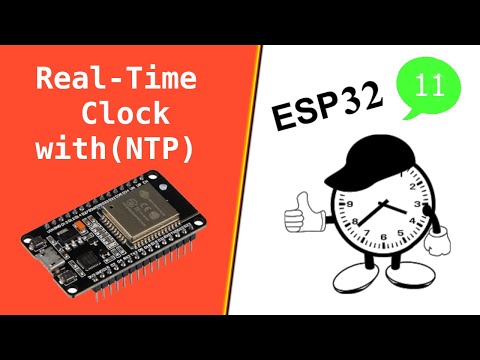
Found 9 images related to esp32 set time without ntp theme










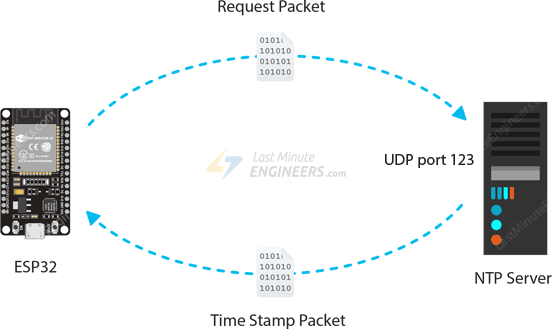


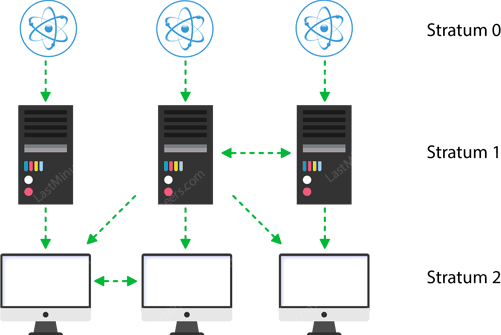





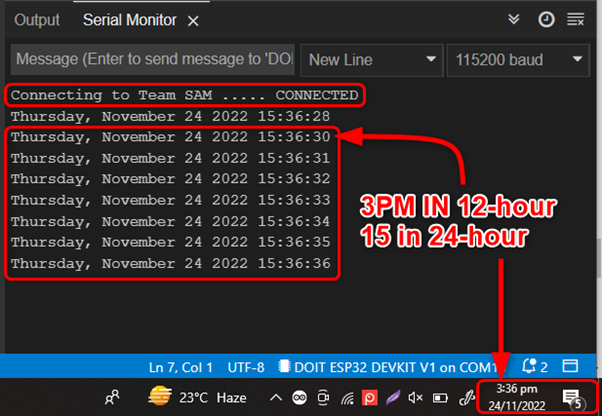









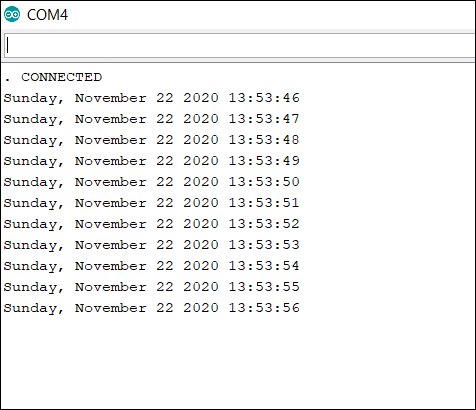




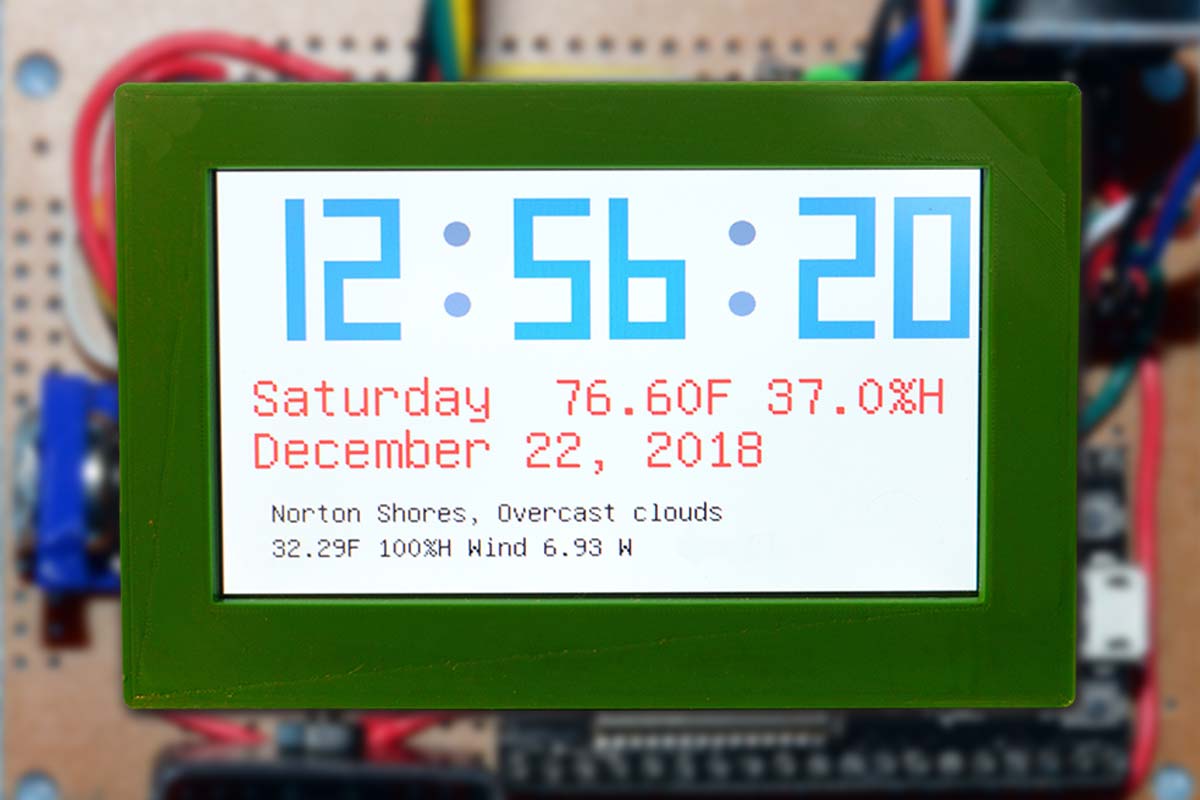

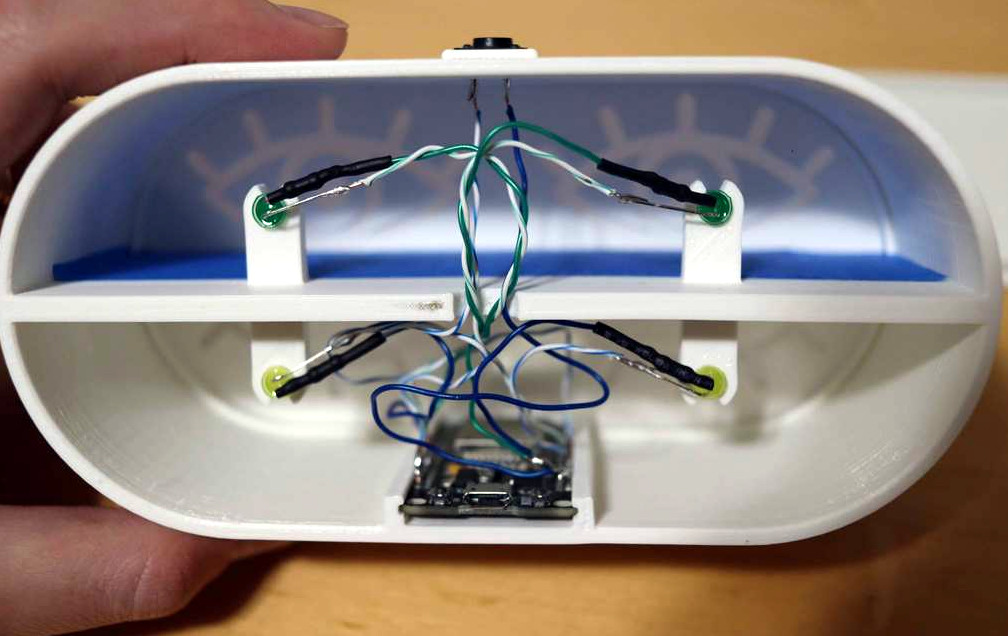




Article link: esp32 set time without ntp.
Learn more about the topic esp32 set time without ntp.
- How can I set the ESP32’s clock without access to the internet?
- Set the wall clock time or change GMT offset without ntp server?
- How to use internal RTC of ESP32 without using NTP
- How to use internal RTC of ESP32 without using NTP
- ESP32 & DS3231 Based Real Time Clock (RTC) on OLED
- Getting Date & Time From NTP Server With ESP32
- ESP32 Arduino time operations – iotespresso.com
- Set RTC without connecting to SNTP server #994 – GitHub
- ESP32 NTP Time – Setting Up Timezones and Daylight Saving …
- How to configure time without using NTP server? : r/esp32
- System Time – ESP32 – — ESP-IDF Programming Guide latest …
- How can I set the date / time? – ESP32 Forum
- Getting Date & Time From NTP Server With ESP32
See more: https://nhanvietluanvan.com/luat-hoc/